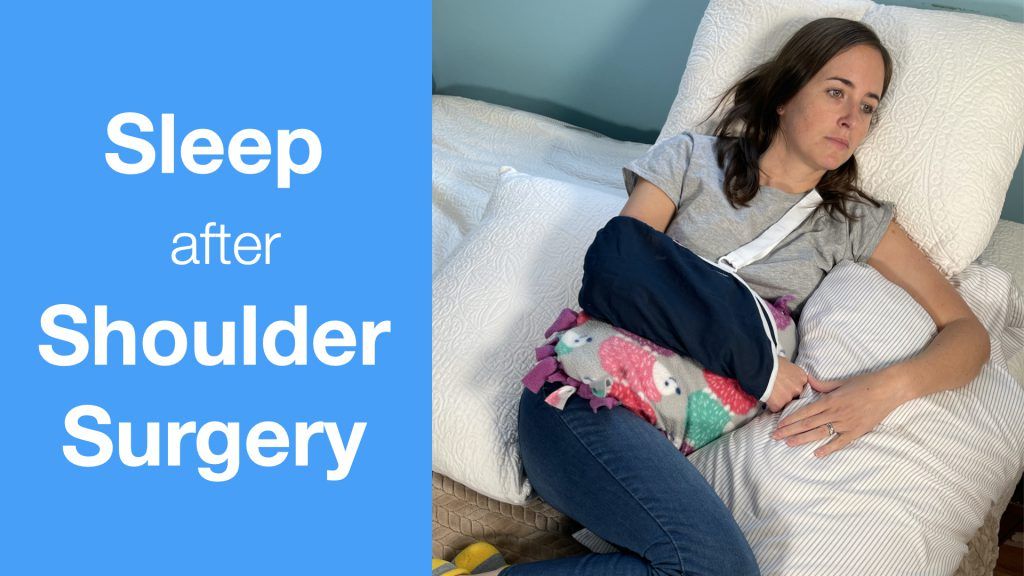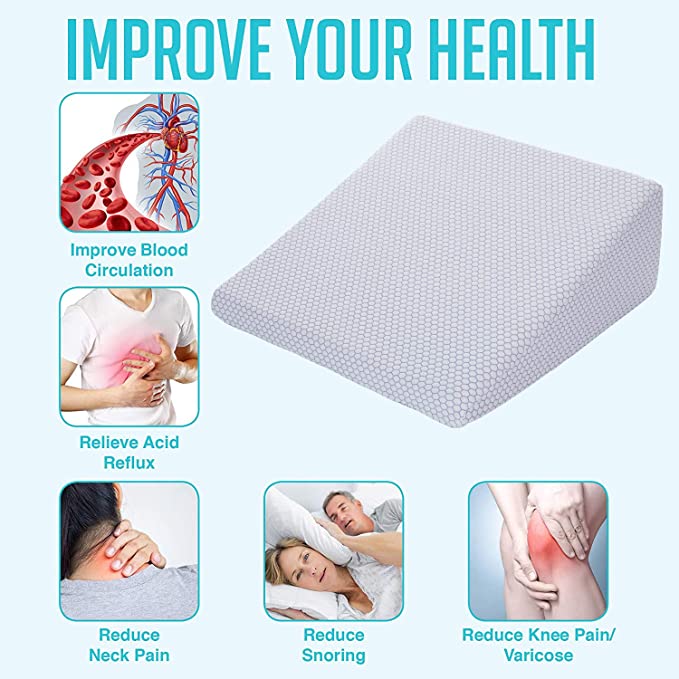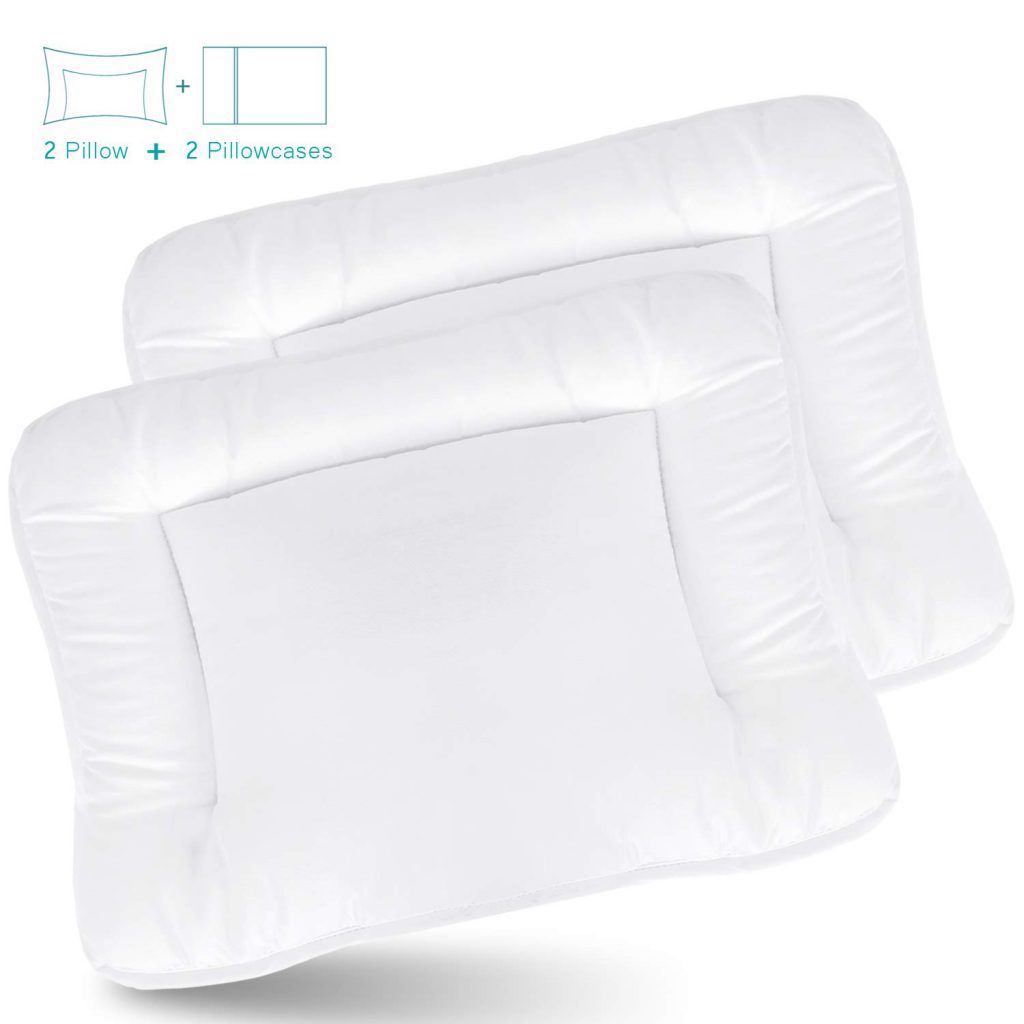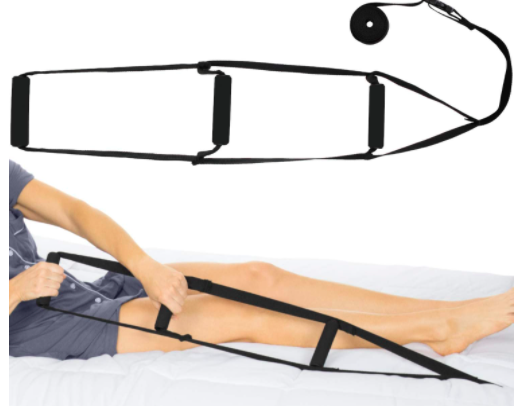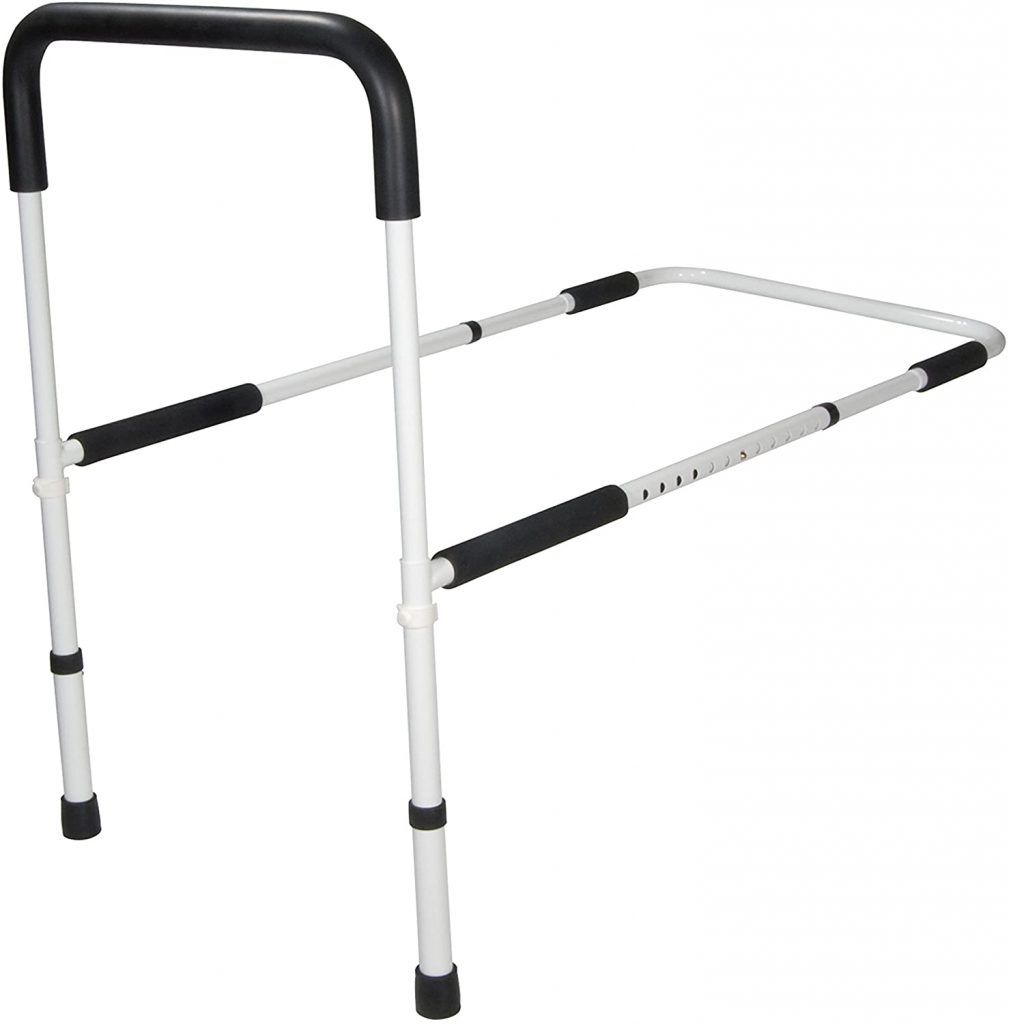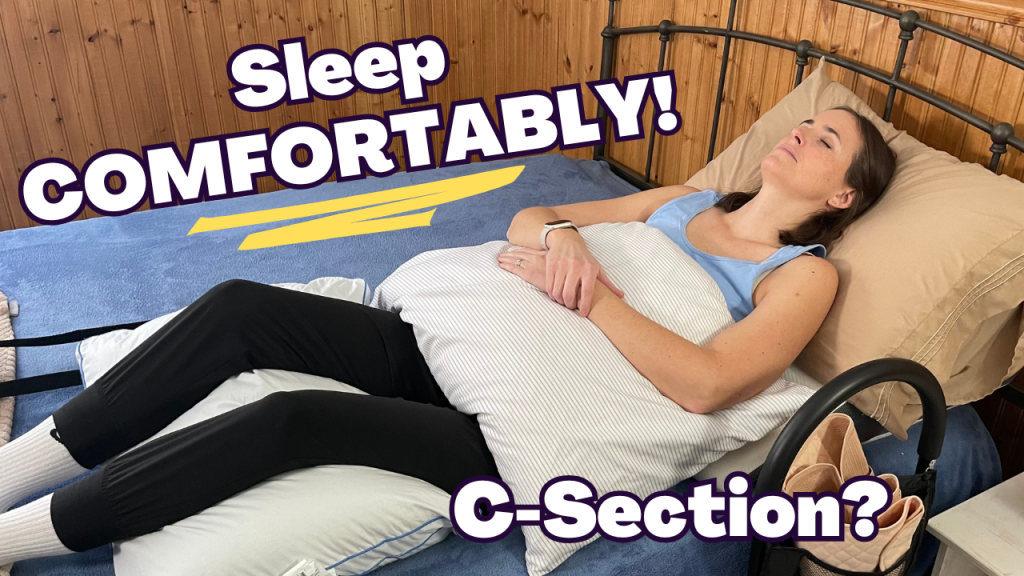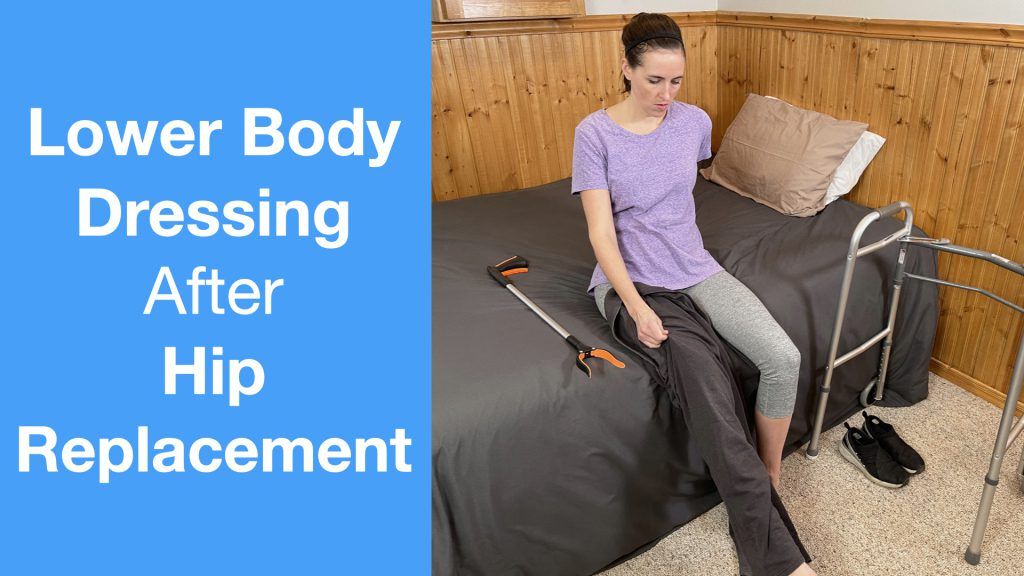Can’t sleep after shoulder surgery? Recently had an injury or went through a shoulder surgery such as a rotator cuff repair?
Don’t worry. Many patients have no idea how to sleep after shoulder surgery. It’s common for patients with shoulder surgery have trouble sleeping because they can’t get comfortable at night.
Invest some time and money into sleeping to ensure your body can heal quickly and effectively. A good night’s sleep after shoulder surgery is critical for recovery after surgery. Many doctors will recommend sleep after a shoulder injury to ensure that the body has time to recuperate.
In this post, we will provide details on how to sleep safely after shoulder surgery or injury when requiring the immobilization of the shoulder joint. We will also include information about equipment, technique, and safety considerations to maximize your independence with sleeping!
If you prefer a video how-to, please check out my video on my YouTube Channel.
Overview
Getting comfortable after getting shoulder surgery can be very difficult. Your position in bed following an injury that requires you to be in an immobilized sling position that is notoriously uncomfortable. It can be difficult to get into a comfortable position to let the body rest.
We’ll go over some options that are beneficial during the recovery phase. It’s important to focus on the bed since sleeping could help in the healing process.
- Equipment
- Can I Sleep in a Recliner After Shoulder Surgery?
- Types of Sling to Have to Help You Sleep After Shoulder Surgery
- What Is the Best Position to Sleep After Shoulder Surgery?
- How to Sleep On Your Back Following Shoulder Surgery
- Can I Sleep on My Side After Shoulder Surgery?
Equipment
Many patients should also consider bed mobility when recovering from a shoulder ailment. One item I like to have in place on a bed for those who struggle with bed mobility is a bed rail. I’ve outlined bed rails and their uses in my other posts and videos here:
Another tool that is easy to use and install is a bed ladder. It’s a simple tool that loops around the end of a bed and gives you something to pull against to help sit up. I’ve outlined best practices for this tool in my other post here:
Please note: Before we begin, you need to make sure you follow all the instructions and warnings provided by the manufacturer. The steps below are only to provide guidance with installing or assembling equipment, but you should always follow the warnings and instructions provided by the manufacturer and always speak with your medical team before adding new equipment to your routine.
Pillows for Sleeping After Shoulder Surgery
Owning thin, throw, or accent pillows can help you sleep after shoulder injury. These pillows can be placed between your injured arm and your abdomen. Before you do that, however, you will need to discuss with your surgical or recovery team to verify that you are allowed to support the arm with a pillow between the arm and abdomen as some recoveries do not allow for this. If your team allows it, it can be much more comfortable as the pressure of your arm is supported across the pillow, rather than directly on your abdomen.
Wedge Pillow
Small Flat Pillow
Bed Ladder
Bedroom Rail
Can I Sleep in a Recliner After Shoulder Surgery?
Yes, but sleeping in a recliner is not recommended. Many recliners are not in a shape or position that would allow you to sleep in them for a long period of time without causing undue stress for other parts of the body. In addition, depending on the recliner, it may not allow you to position your injured or repaired shoulder to relieve shoulder pain while sleeping.
I recommend, and your therapy team may too, that you have an alternative sleeping arrangement, specifically a bed, to use for sleeping after shoulder surgery.
Types of Slings to Have to Help You Sleep After Shoulder Surgery
Learning about other options for supporting the injured or repaired arm is crucial to ensure that you’ll have a fast recovery. You may not be aware, but there are several types of slings that can help keep your shoulder immobilized after surgery. I am going to just highlight two here.
The first sling has extra padding between the forearm and the stomach. It also might have extra strapping that wraps around your body for additional security for shoulder to keep it from sliding around. You might ask your surgery team if this type of sling is an option after your shoulder surgery. Let me be clear, you should NEVER change the sling you use without consulting your surgery team first.
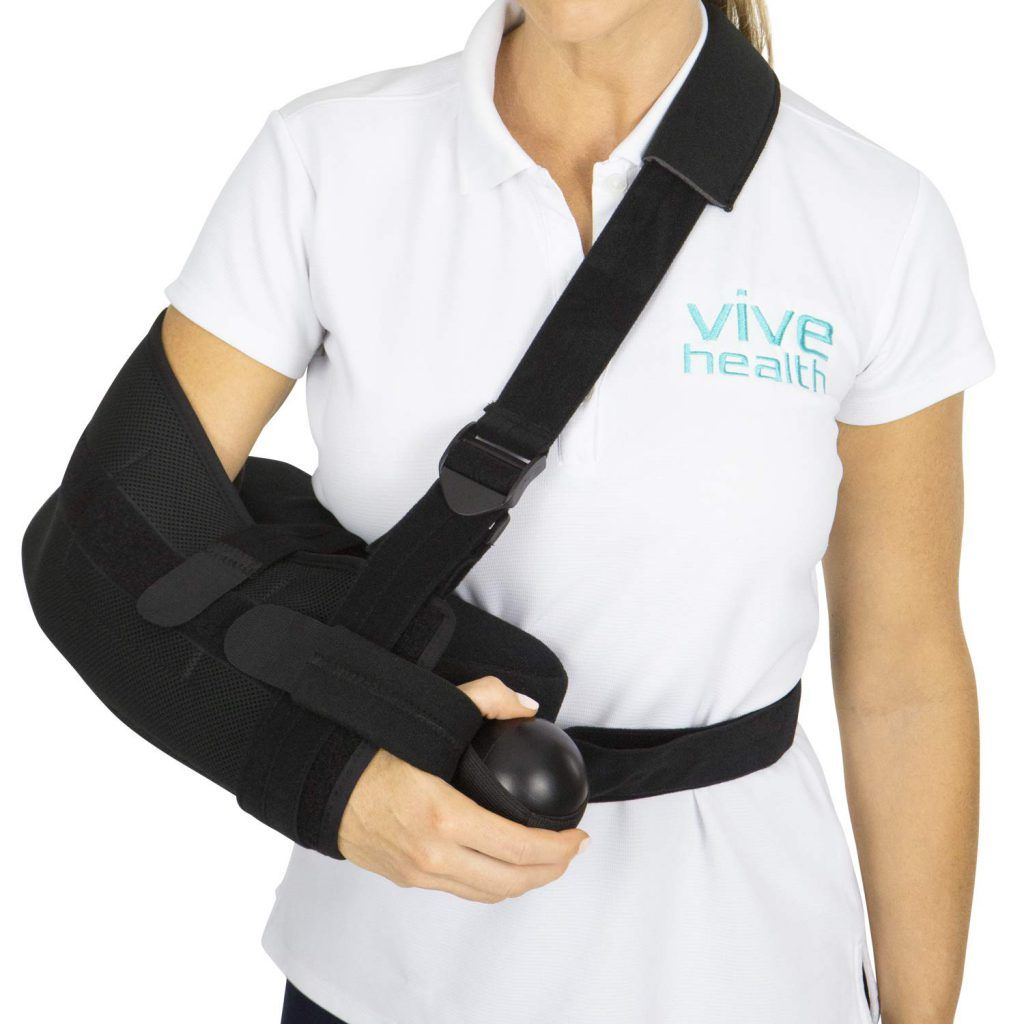
The next type is the simple, over-the-shoulder sling that you may have seen before.
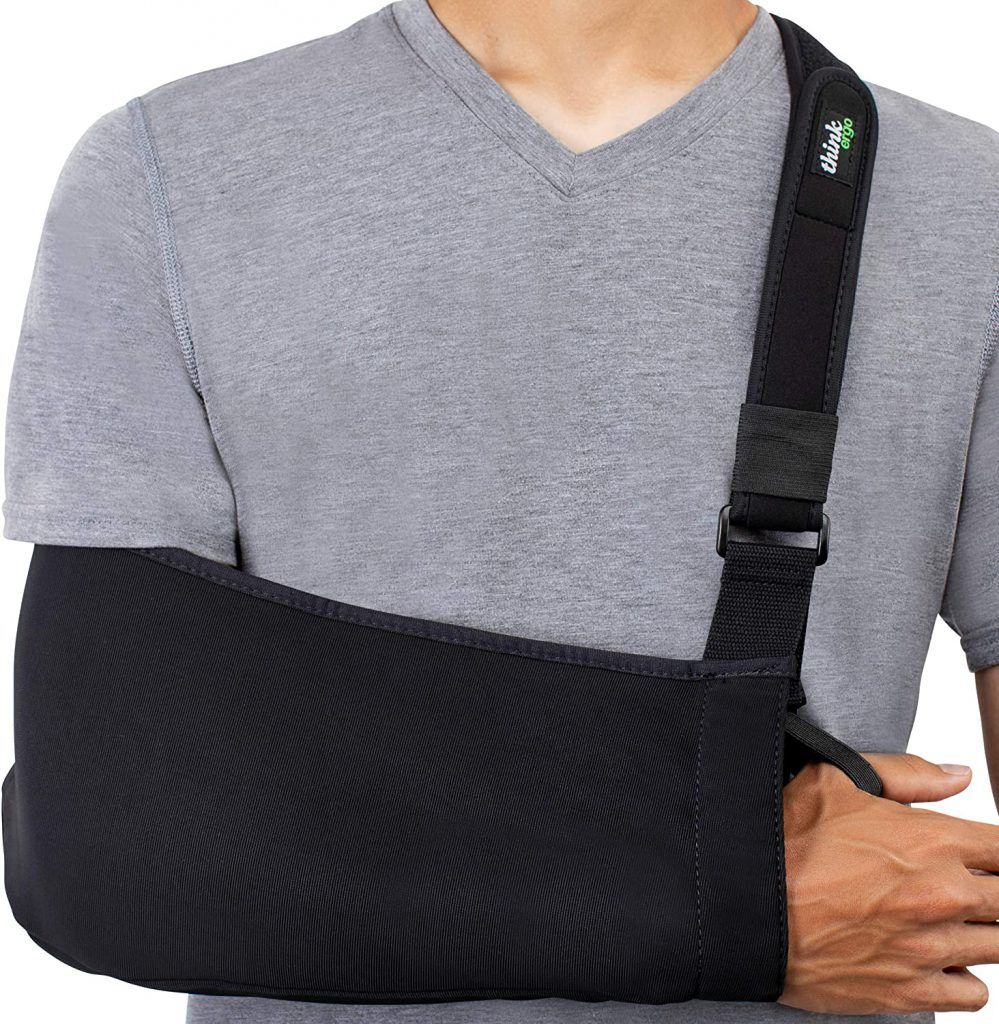
If you were given one of these, you will have to pay extra attention to how your arm moves when you sleep. Again, you should never change the type of sling you use without consulting your surgery team first.
What Is the Best Position to Sleep After Shoulder Surgery?
The best position to sleep in after shoulder surgery is on your back with elevated surgical side. Laying flat on the back can be difficult during the first few weeks of recovery. As mentioned before, having something like a wedge pillow is excellent to elevate your surgical side and head to help get into a comfortable position. These wedges are a great starting point.
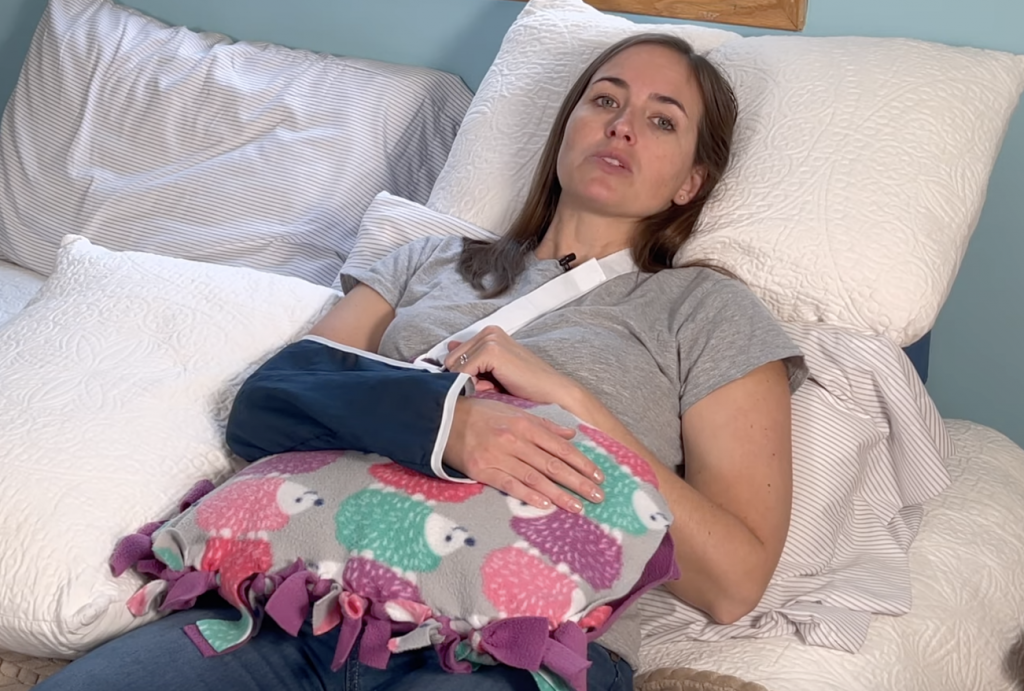
How to Sleep on Your Back After Shoulder Surgery
First, you need a very thin pillow. We’re going to use this pillow between your arm and your stomach to support your shoulder. Before you do this, you need to consult with your surgery team to make sure this is OK to do.
Gently, slide the pillow between your forearm in your sling and your stomach/chest. This alone should provide additional support and comfort for sleeping.
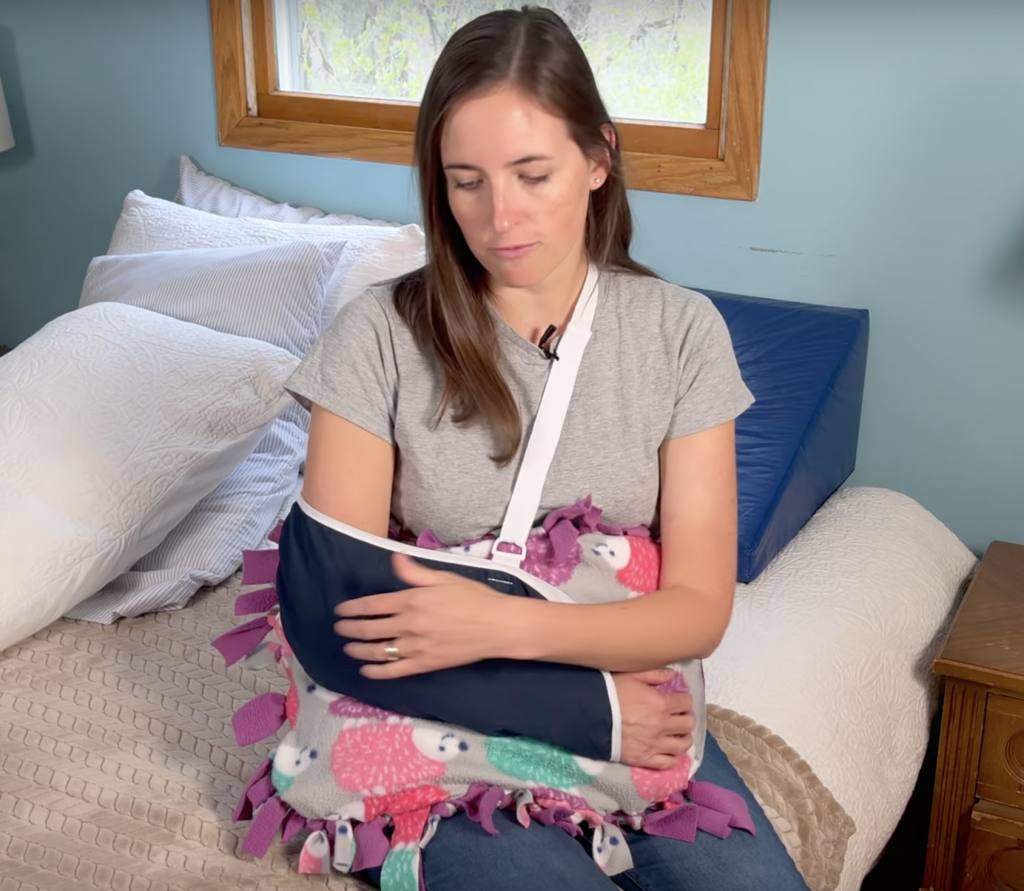
Next, you’re going to lay back in bed.
First, position the wedge pillow at the head of your bed. The wedge is also excellent as a base to apply other pillows. I recommend putting a firm pillow towards the top of the wedge and a softer pillow toward the bottom. Setting a firm pillow at the bottom could put uncomfortable pressure on the shoulder or scapula.
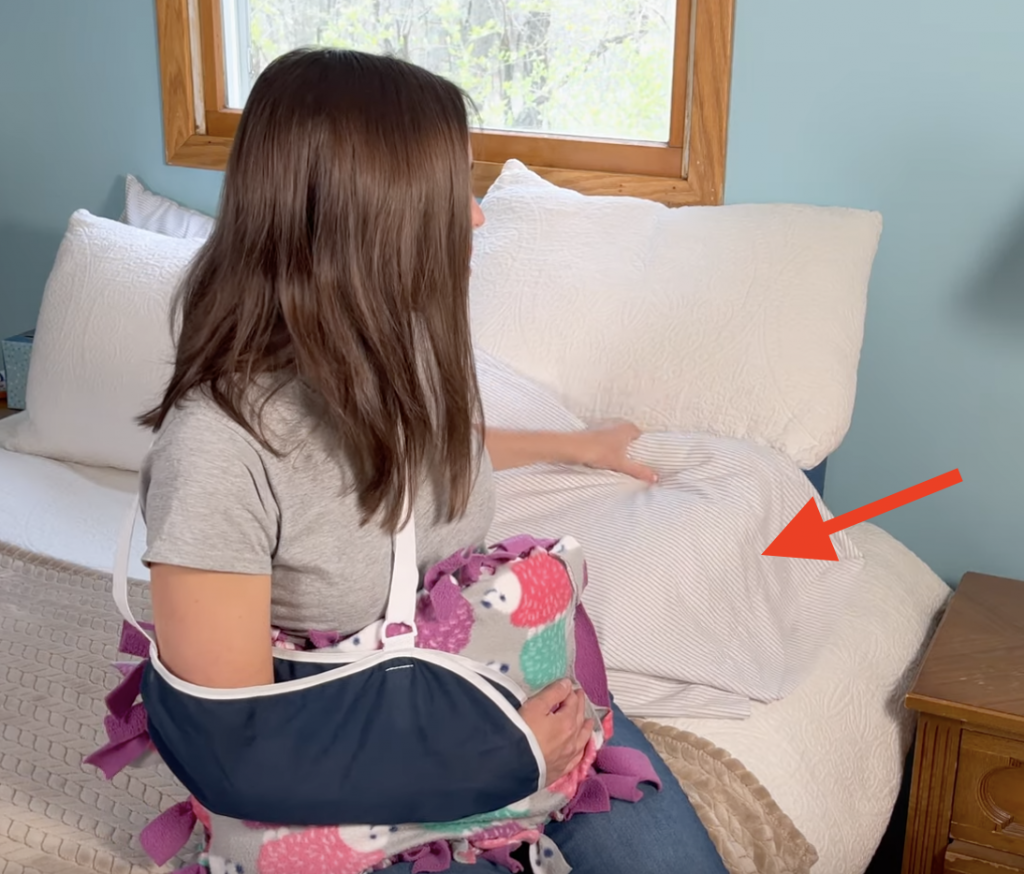
Now you can lay back. Using a wedge and pillows, it is essential to ensure the arm does not “slump” off to the side of the wedge as demonstrated in the photo below.
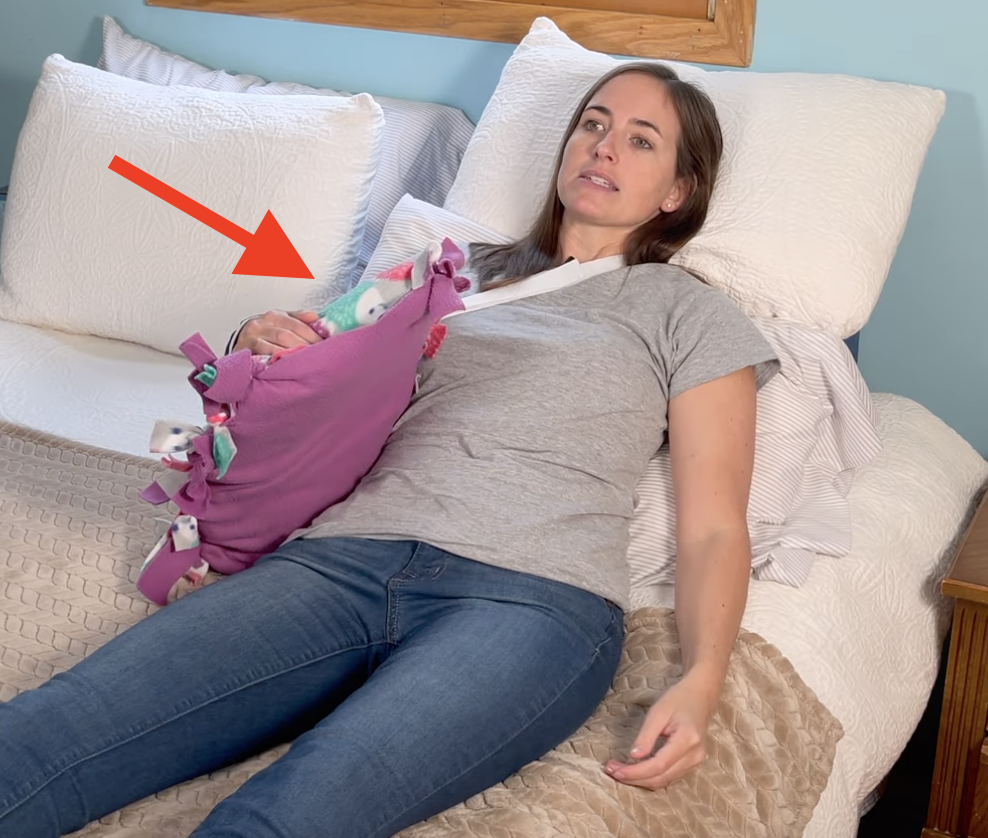
To prevent this, place a pillow under the elbow of your injured or surgically repaired arm. This pillow will keep the arm from rolling or sliding to the slide while sleeping. This pillow should rest along the back of the upper arm and at the elbow without pushing upward at the elbow.
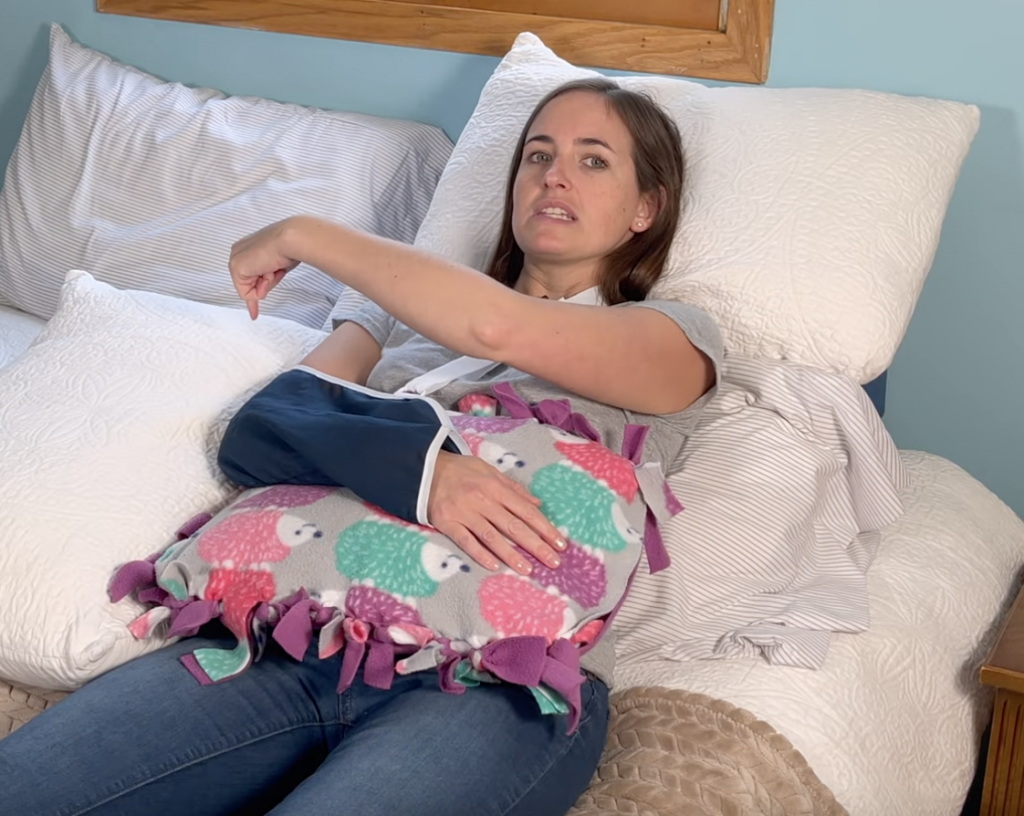
Can I Sleep on My Side After Shoulder Surgery?
Yes! Some people who only sleep on their side will find it comforting to know that side sleeping (on the opposite side of the injured side) is possible. It will require more pillows and may need an extra set of hands to help keep the should be positioned safely.
To start, obviously, you cannot sleep on your surgical side. You will have to sleep on your non-surgical side. Next, you’ll want a pillow to ensure your arm doesn’t slump in the downward, across-body position. A pillow should be positioned between the bed and your fist to support the arm. A body pillow can be a good option for this.
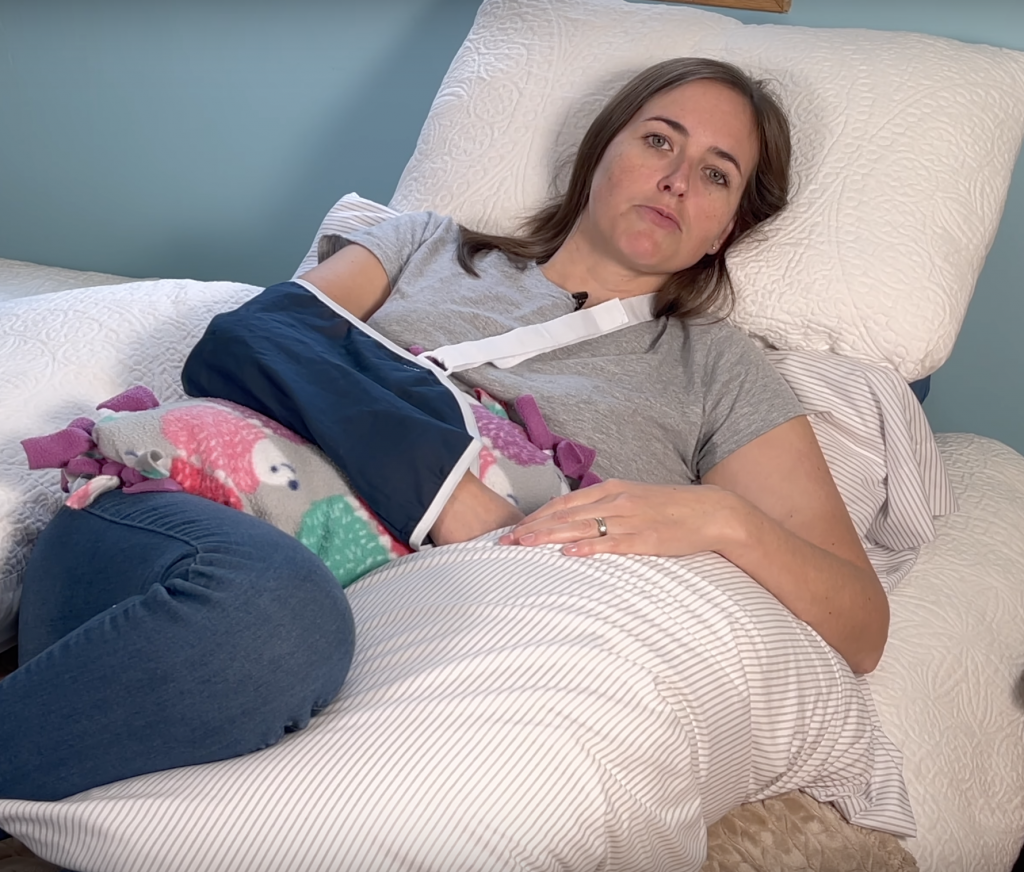
Just as we showed when sleeping on your back, you will need an extra pillow under your hip and injured arm to keep your arm from slumping and to prevent you from rolling over in the middle of the night. The extra set of hands can be helpful to add this extra pillow behind you to prevent rolling back onto your back.
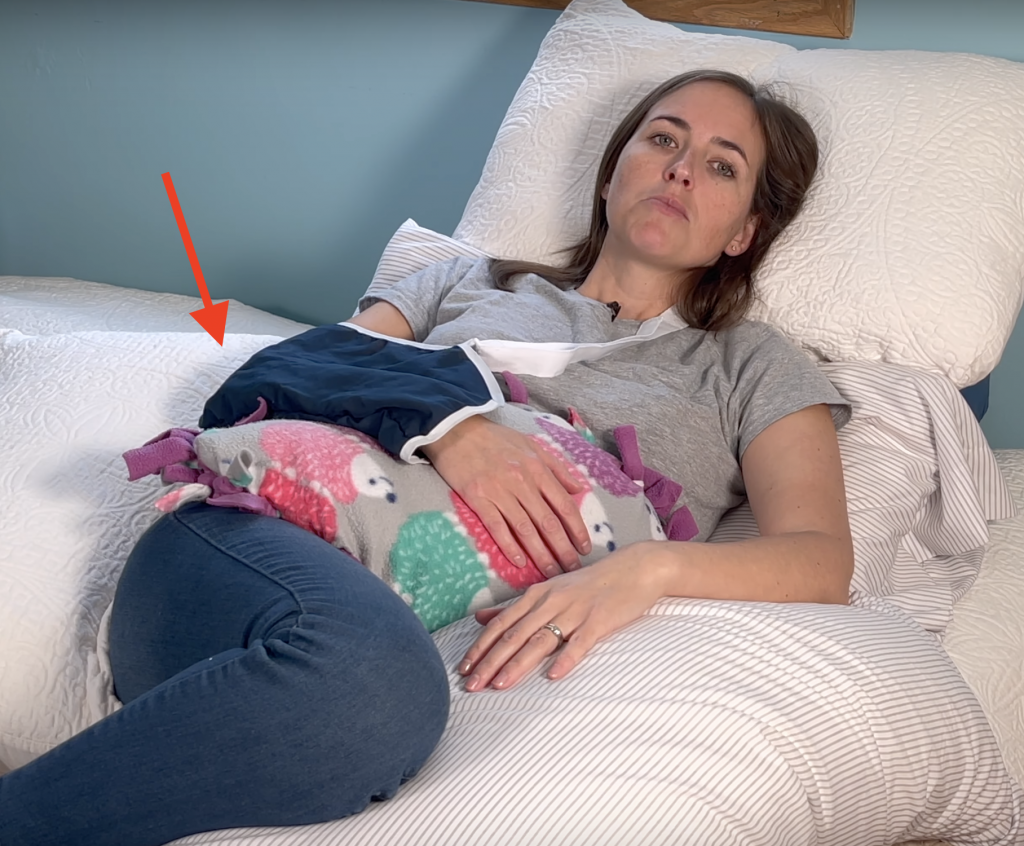
That’s it! Hope you found this content helpful.
*all prices are at the time of publishing
Note: This post contains affiliate links that provide a small commission without any added cost to the user.
- How to Sleep After a C-Section or Abdominal SurgeryRecovering from a C-Section, appendectomy, abdominoplasty, or other abdominal surgery can feel overwhelming, especially when it comes to something as essential as sleep. With a tender incision and limited mobility, finding a comfortable position may seem impossible—and yet, proper rest is critical for healing! In this …
How to Sleep After a C-Section or Abdominal Surgery Read More »
- How to Get In and Out of the Car after Hip ReplacementGetting in and out of a car after a hip replacement can feel like navigating an obstacle course. Ensuring you move safely and avoid unnecessary strain on your healing hip is essential for a smooth recovery. Whether you’re heading to a follow-up appointment or simply enjoying …
How to Get In and Out of the Car after Hip Replacement Read More »
- A Complete Guide to Lower Body Dressing After Hip Replacement SurgeryRecovering from hip replacement surgery (or similar traumatic injury) comes with its challenges, especially when it comes to everyday tasks like getting dressed. While your mobility may be temporarily limited, dressing your lower body can be made much easier with the right strategies and tools. This …
A Complete Guide to Lower Body Dressing After Hip Replacement Surgery Read More »
